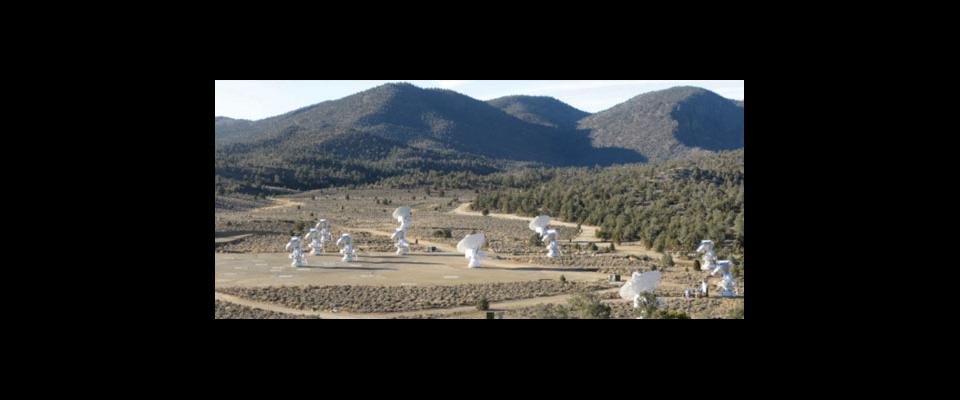When a Berkeley-led astronomy team joined forces with a rival facility at Caltech in 2004, they established the world’s largest telescope array. Both labs had pioneered a new technique, called millimeter wavelength astronomy, to image minuscule particles in the outer reaches of the universe. The facility, called the Combined Array for Research in Millimeter-wavelength Astronomy, or CARMA, harnesses the power of the 23 dishes brought together by the two facilities to provide an unprecedented level of detail for such projects as studying dust disks for clues about how planets form, and searching for organic molecules in the tails of comets. Berkeley’s Radio Astronomy Laboratory is now one of five institutions managing the operation of the array.
The facility’s site, nestled at the top of Westgard Pass in the White Mountains near the Nevada border, was chosen in part for its accessibility and its high elevation. At 7,200 feet, the surrounding atmosphere holds little water vapor—a vital characteristic because ambient moisture can absorb the high-frequency radio signals that the array uses to “listen” to the universe. The array’s 23 dishes range in size from 3.5 to 10.4 meters across, and were hauled onto the site from the original locations in Owens Valley and Hat Creek in Northern California. The researchers rely on a technique called interferometry, which superimposes images from the dishes to create a very-high-resolution picture. The larger and more numerous the dishes, the more complete the picture is.
One of CARMA’s main projects is to study the faint signals from the distant reaches of the universe—traces of the Big Bang. Some of the galaxies studied are nearly as old as the universe itself.



















